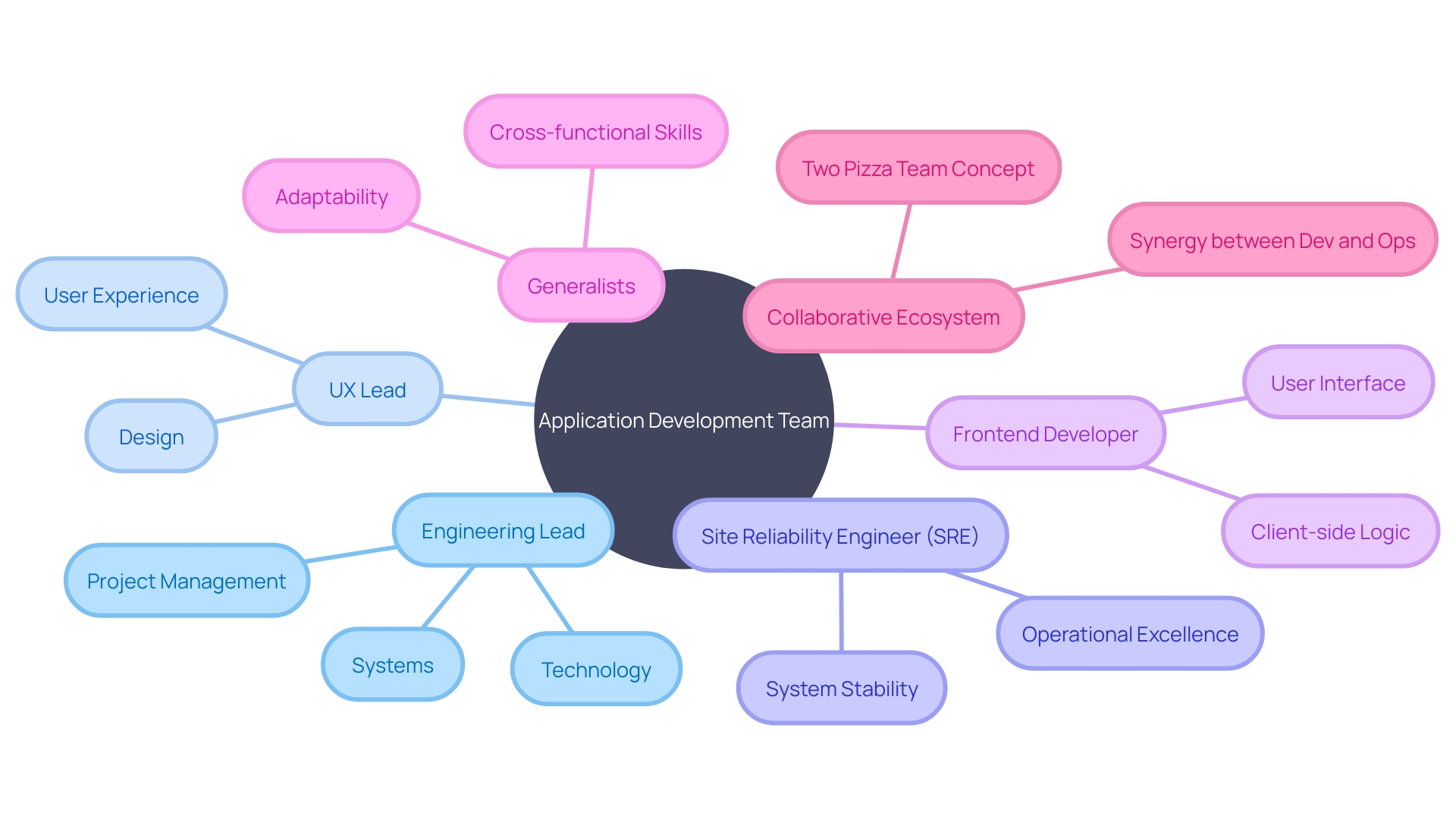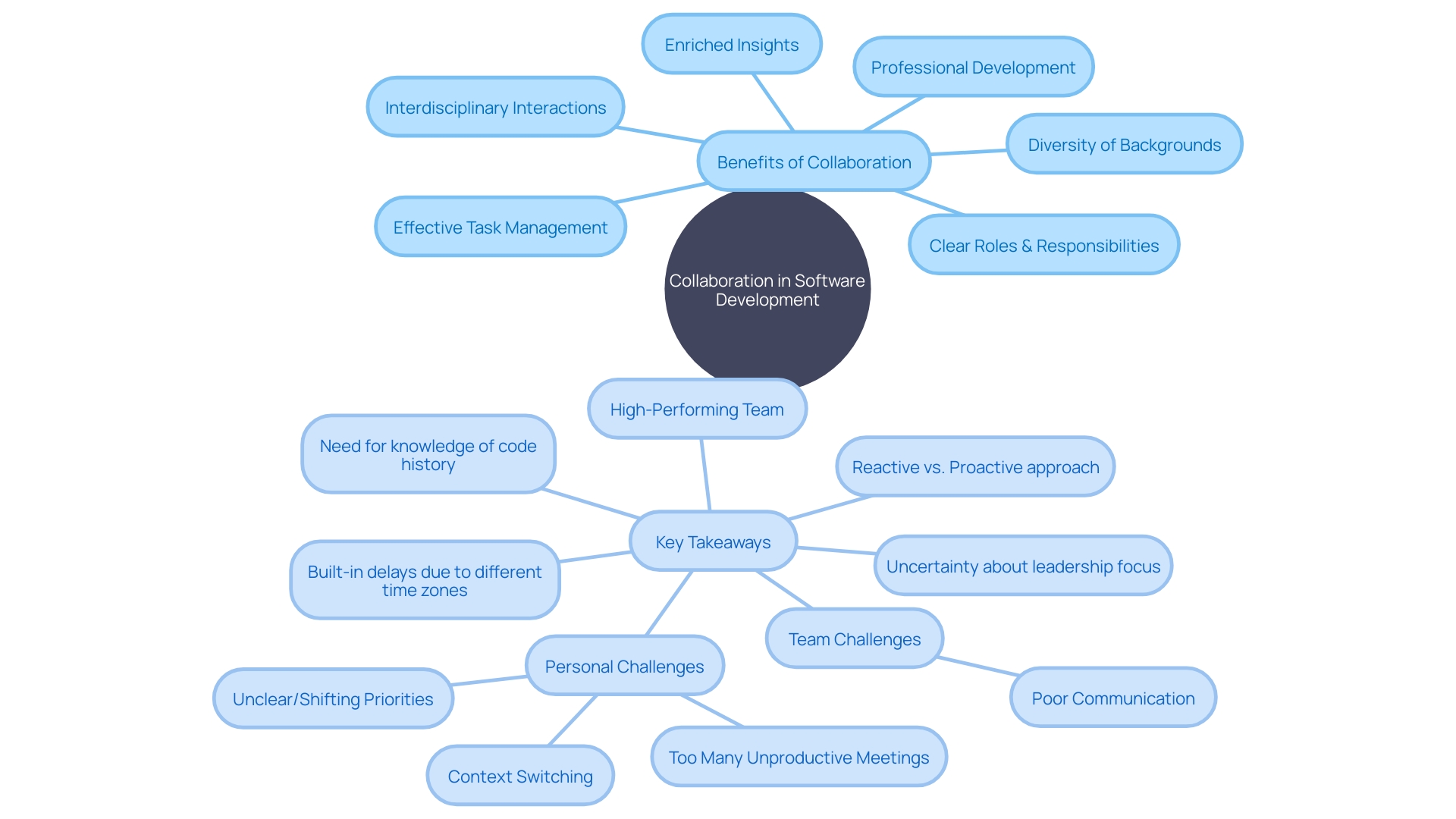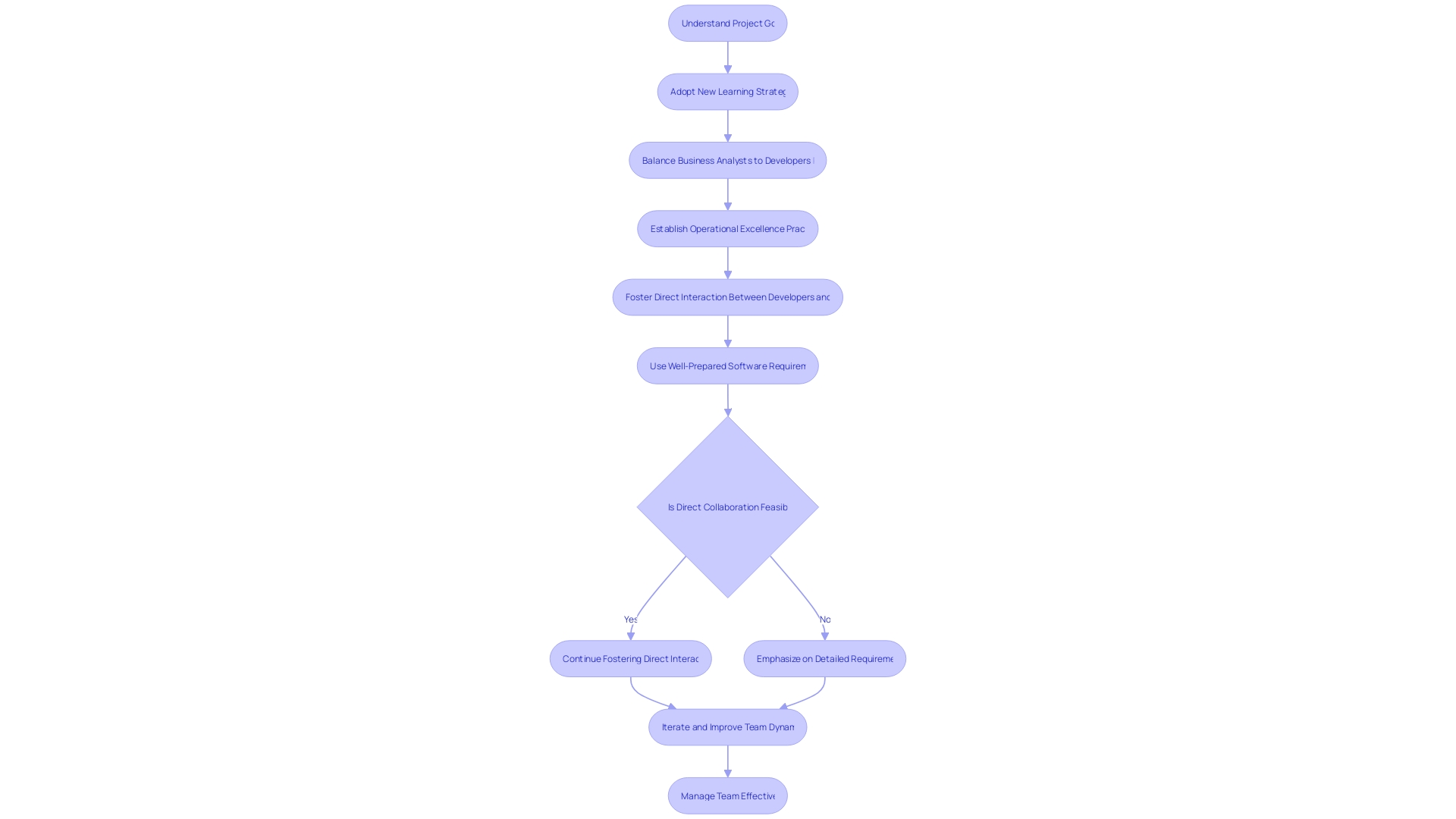Introduction
Crafting a well-rounded application development team goes beyond simply filling seats. It involves fostering a collaborative ecosystem where each role is tailored to the project's needs. In this article, we will explore the different roles within an application development team and how they contribute to the overall success of the project.
From the engineering lead's focus on scalability and performance to the UX lead's dedication to usability and aesthetics, each role plays a vital part in addressing challenges and ensuring business objectives are met. We will also delve into key strategies for effective teamwork, agile methodologies, best practices for leading a development team, managing team size and structure, and budgeting and cost considerations for application development. By understanding these aspects, you will be equipped with the knowledge to build and lead a successful application development team.
Understanding the Roles in an Application Development Team
Crafting a well-rounded application development team is about more than just filling seats; it's about fostering a collaborative ecosystem where each role is tailored to the project's needs. Consider the engineering lead, whose focus on scalability, resilience, and performance is as critical as the UX lead's dedication to usability, accessibility, and aesthetics.
When challenges arise, it's the combined expertise of these leaders that acts as the first line of defense, swiftly addressing escalations and maintaining open lines of communication with stakeholders. The team's orientation towards outcomes rather than mere activities sets them apart, ensuring that business objectives are always at the forefront.
This approach is exemplified in the 'Two Pizza Team' concept, where small, self-sufficient teams within larger organizations are empowered to make swift decisions, often managing their own budgets which include infrastructure costs. In the realm of technical expertise, generalists dominate the landscape.
They navigate a wide array of technologies, ready to plug any gaps and take ownership of orphaned resources. Such agility is essential, especially when there are no one-size-fits-all platforms available.
Teams may leverage widely-used third-party platforms like Ruby on Rails, or integrate multiple platforms to build a robust foundation that addresses storage, network, and observability needs. The Site Reliability Engineer (SRE), for instance, is instrumental in ensuring system reliability and stability, automating tasks, and planning for capacity. Similarly, a Frontend Developer is pivotal in creating intuitive user interfaces. Together, these roles embody the synergy between development and operations, reinforcing a culture of reliability engineering. These dynamics are not just theoretical; JetBrains' Developer Ecosystem Survey reveals the diversity of professionals across roles, experience levels, and industries, highlighting the importance of a tailored product strategy. For example, Python developers in Germany with less than a year of experience represent a specific market segment, illustrating the granularity needed in team composition and project planning.

Key Strategies for Effective Teamwork
For a software development team to be truly effective, collaboration is not just beneficial; it's essential. Encouraging interdisciplinary interactions is one of the most potent strategies for fostering a collaborative environment.
When team members from various specializations come together, they share unique insights that enrich the project. To facilitate this, clear definitions of roles and responsibilities are vital.
When each individual is aware of their tasks and how these contribute to the broader objectives, it prevents overlap and enhances accountability. Professional development is another cornerstone of a high-performing team.
By supporting continuous learning and providing resources for skill advancement, team members can stay abreast of industry trends and emerging technologies, fostering an environment that's receptive to innovation. JetBrains data underscores this, indicating that 45% of developers engage in remote collaborative development, often using video calls for simultaneous collaborative work, despite the challenges posed by distributed teams.
Moreover, embracing a diversity of backgrounds and experiences within the team can lead to more creative solutions. A varied team composition ensures that a wide array of perspectives informs decision-making processes.
This diversity is not only beneficial for idea generation but also reflects the multifaceted nature of software development. JetBrains' collaboration with GitKraken unearthed interesting insights into team dynamics, revealing that the most successful teams strike a balance between individual productivity and collaborative efficiency. Surprisingly, larger teams don't always equate to increased productivity, which challenges conventional wisdom. Instead, optimal team size and effective task management play a more pivotal role. In essence, for a software team to excel, it must cultivate a culture where questions are encouraged, learning is continuous, and diversity is valued. As highlighted by the State of Git Collaboration Report, this balanced approach to teamwork and task management is what sets apart the truly successful teams in the ever-evolving landscape of software development.

Agile Methodologies and Scrum Implementation
Scrum, an agile framework, has risen in prominence within software development for its emphasis on iterative progress, frequent communication, and teamwork. It contrasts with the traditional 'waterfall' approach, which often leads to the late development of working software, inflexibility in changing requirements, and difficulty in measuring progress. In the face of these challenges, agile methodologies like Scrum offer a more flexible and adaptive workflow, akin to the innovative construction of the Hoover Dam, which was completed two years ahead of schedule despite the adversities of the Great Depression.
Agile's principles, such as welcoming late project changes and fostering close collaboration between developers and business executives, have proven effective. In fact, a survey of 788 tech workers revealed that 71% use agile in their software development lifecycle. However, it's noteworthy that smaller companies report greater satisfaction with agile, as 52% express happiness with its outcomes compared to 43% of larger businesses.
This suggests that agile's effectiveness can vary depending on organizational size and structure. Moreover, the success of agile is evident as 44% of respondents believe that enterprise agile works very or somewhat well for their organizations, with small companies reporting that at least 50% of their applications are delivered on time and with quality. These insights underscore the importance of agile methodologies in fostering a culture of collaboration, adaptability, and continuous improvement, which is essential in the dynamic realm of software development.

Best Practices for Leading an Application Development Team
To lead an application development team effectively, it's crucial to understand the intricate balance between technical prowess and team dynamics. Consider a project involving the overhaul of a legacy application with a mix of React and Backbone JS in the front end and.
NET in the backend. The ambitious goal was to redesign a frontend with over 500 pages, ensuring an architecture robust enough to endure a decade, and to deploy it incrementally, allowing users to benefit from new features promptly.
This underscores the necessity of a robust and adaptive approach to team management in the face of complex, large-scale projects. A key insight from industry experts is the need for development teams to adopt new learning strategies, as they often engage more in acquiring new skills than applying existing knowledge, especially in a VUCA environment.
This continuous learning is vital to maintain the flexibility required to navigate the uncertainties of software development. Furthermore, the ratio of business analysts to developers is critical for balancing requirement analysis and development pace.
A recommended practice is to have one business analyst for every 3 to 5 developers. This ensures that requirements are prepared concurrently with development, allowing for emergent needs and learnings to be integrated into the project.
Operational excellence is another cornerstone of effective leadership. It involves establishing checks and balances to ensure the team consistently delivers high-quality products. This systematic approach helps in aligning the team with business outcomes and in maintaining the product's health. Lastly, fostering direct interaction between developers and users is paramount. While large corporations often suffer from a disconnect between these two groups, bridging this gap can lead to more intuitive development and reduced reliance on written requirements. However, when direct collaboration isn't feasible, well-prepared software requirements become indispensable to guide development efforts.

Managing Team Size and Structure
Optimizing the composition of your application development team is essential for achieving project milestones efficiently. When structuring teams, it's beneficial to adopt an Outcome Oriented approach, emphasizing business results over mere activities.
Adopt the 'Two Pizza Team' rule, which suggests teams should be small enough to be fed with two pizzas, fostering better collaboration and efficiency. In the realm of team size, the 2024 State of Git Collaboration Report by JetBrains and GitKraken, which surveyed over 150,000 developers, reveals that smaller teams often outperform larger ones in terms of average developer productivity and quality of collaboration.
This insight is pivotal for maximizing velocity and quality in software development. To ensure streamlined operations, it's advisable to utilize platforms that address common technical needs like data storage and network communications.
This strategy significantly reduces cognitive load, allowing developers to focus on core functionalities that directly impact project success. Prioritizing tasks is another critical factor.
Focusing on essential features and leveraging time-saving resources like open-source software can conserve both time and budget. Regular code reviews within the team are instrumental in maintaining high code quality, early identification of issues, and knowledge sharing. Moreover, the complexity of communication in larger teams can introduce inefficiencies, as highlighted by the exponential increase in communication channels with each additional team member. This concept, often illustrated by Brooks’ law, suggests that adding manpower to a late software project only makes it later, due to ramp-up time and communication overhead. Lastly, consider Dunbar's number, which posits that 150 is the maximum number of stable relationships one can maintain. This principle is applicable in team management, indicating that beyond a certain size, teams may suffer from decreased productivity due to an increase in 'noise' during meetings and reviews.

Budgeting and Cost Considerations for Application Development
When embarking on application development, it's essential to navigate budgeting and cost considerations with a strategic lens. A prominent example comes from Northspyre, where holistic budget tracking has been a game-changer. By keeping a close eye on approved proposals and bids, Northspyre has streamlined decision-making and enhanced project outcomes.
Their responsiveness to issues underscores the importance of effective communication and support in managing development costs. Similarly, Newell Development reaped the benefits of Northspyre's ability to provide insights into cost-saving opportunities by comparing current projects with past ones. This not only eliminated the tedious manual work of comparative analysis but also allowed their team to zero in on strategic decision-making.
Rivian's commitment to environmental sustainability and their goal of net-zero emissions by 2040 is another testament to the importance of aligning budgeting with company values and long-term objectives. Their focus on sustainable processes and materials underscores the need for efficiency and innovation in cost management. The tech industry's pivot towards incorporating AI, as seen with Salesforce's investment in generative AI tools, is a reminder that operational efficiency and future-proofing are key components of cost considerations.
The correlation between AI discussions and operational efficiency in earnings reports from companies like Pfizer and BlackRock highlights the industry's move towards expense discipline balanced with technological investment. In the realm of software development, understanding the problem, validating the business case, and ensuring effective project management are fundamental. These steps help in avoiding pitfalls like focusing solely on the lowest price or neglecting post-development support, which can lead to higher costs in the long run.
The wisdom 'There is never a single right solution. There are always multiple wrong ones' reminds us that quality and value should be at the forefront of our decisions, not just the cost. The journey of application development is nuanced, with each decision impacting the final cost, quality, and value delivered.
Conclusion
Crafting a successful application development team involves tailoring roles and fostering collaboration. Each role, from engineering leads to UX leads, plays a vital part in meeting business objectives. Effective teamwork strategies, such as interdisciplinary interactions and continuous learning, are crucial for success.
Agile methodologies like Scrum offer flexibility and adaptability but may vary in effectiveness based on organizational size and structure. Effective leadership requires balancing technical prowess with team dynamics and fostering direct interaction between developers and users. Optimizing team size and structure is important for efficient project milestones.
Strategic decision-making is key when budgeting for application development, considering factors like effective communication and aligning budgets with company values. In conclusion, building a successful application development team requires tailoring roles, implementing effective teamwork strategies, adopting agile methodologies, practicing strong leadership, optimizing team structure, and making strategic budget decisions. By considering these aspects, you can foster collaboration and drive success in software development projects.





